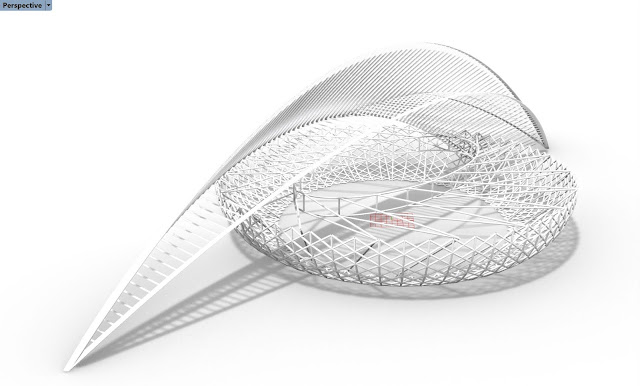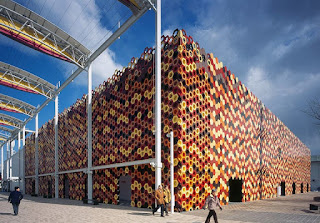Design of Parametric Modeling:: ARCH655 Project 2
Overview
In Project 2, I explored design and algorithmic solutions through my own design concept rather than selected a design or geometrical/algorithmic exercise. This project's main idea was to create a parametric skin and the main building structure for a stadium or arena. The project utilized a python definition that creates the main feature truss on a design inspired by Calatrava bridges where the structure is supported by suspended elements for a dramatic expression of the architecture.
Concept of the Algorithm & Process
2.1 Create the basic organization of the stadium massing using ellipses organized center-oriented and radially. These ellipses established the general scale and size of the contour lines. There are slider numerical inputs to control the proportions, scale, and height.
2.2 Using the Unit Z and move definition, a 3 point arch for the circumference is modulated, then is lofted with a sweep command.
2.3 Once the 2-dimensional surface, it will be divided to create the basis for the skin mesh and eventual structure.
Skin Diagrid
2.4 The stadium's exterior has a diagrid pattern, which is a framework of diagonally intersecting lines and horizontal lines. The diagrid eliminates the need for vertical columns and can make large column-free expanses since it becomes a structural element.
2.5 From the mesh, the vertices will be extrapolated using the Brep deconstruct definition. This will create a list of vertices. With the list item definition, we will get the points of the triangulated mesh.
2.6 Once we get the point, they will be connected using lines to visually create the skin system.
Cantilever Roof Structure
2.7 The roof follows a similar method as the building massing using a 2-dimensional ellipsoidal shape that is then rotated around 12 degrees to create a dynamic effect and interesting shadow pattern of the roof structure. The quantity, angle, and distance from the ground of the roof truss member is control by numeric sliders so the design can be altered and different alternatives could be further explored.
3D Pipes Skeleton
2.8 A simple create pipe definition gives the diagrid skin, and roof trusses its 3 dimensionality. The cross-section or pipe radius is controlled by numeric sliders. This could be separated into individual members or systems that eventually could express structural hierarchy.
Python script truss.
2.9 Using a python script that converts three rhino curves into a 3-dimensional truss. Python script interacts with the rhino model by bringing data through input variables and then outputting other data created within the script. The python component in Grasshopper is actually an add-on.
Video: https://youtu.be/pPUOP1QpsFs



















Comments
Post a Comment